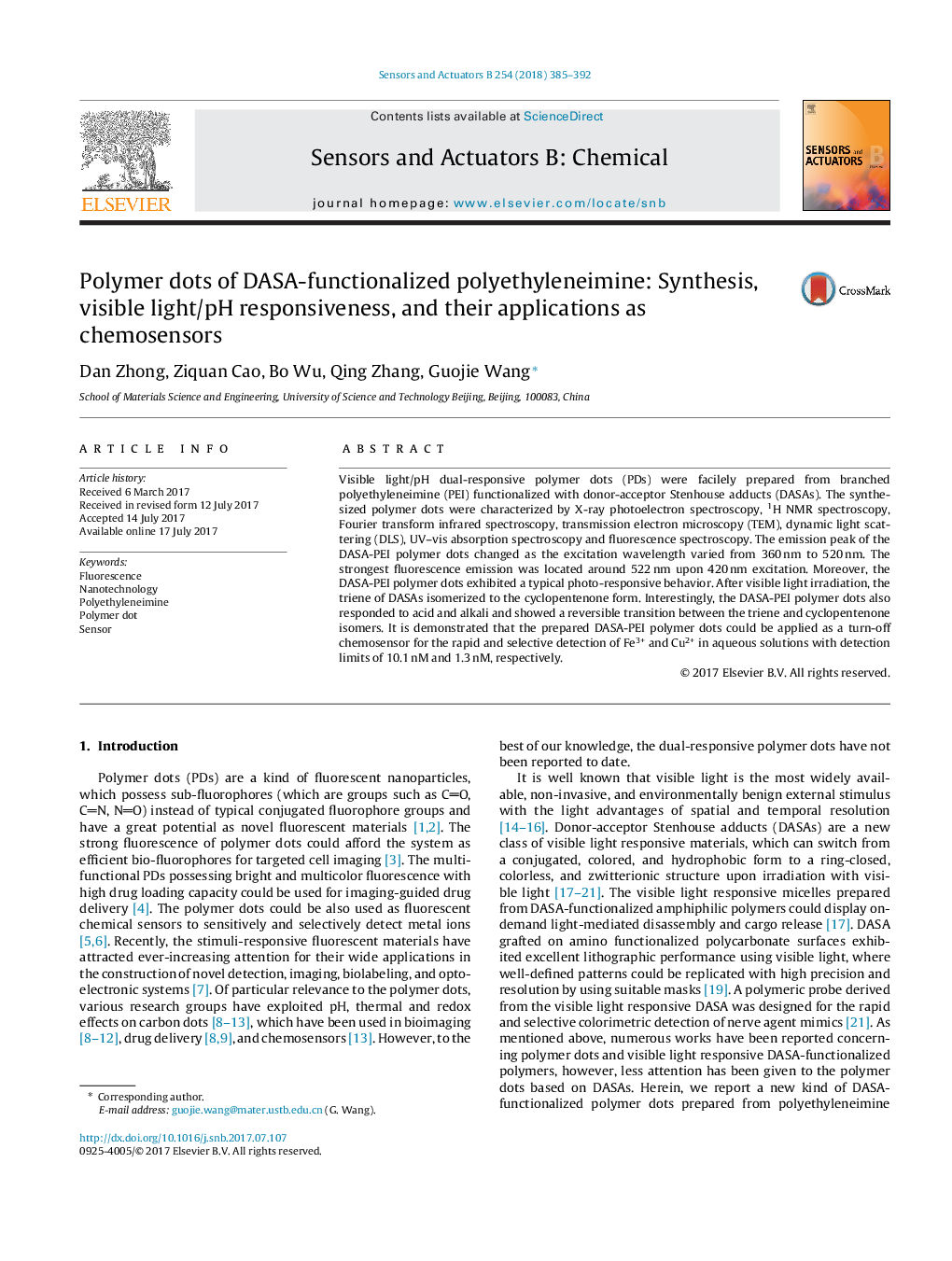| Article ID | Journal | Published Year | Pages | File Type |
|---|---|---|---|---|
| 5008689 | Sensors and Actuators B: Chemical | 2018 | 8 Pages |
â¢A novel polymer dot is developed from branched polyethyleneimine functionalized with donor-acceptor Stenhouse adducts.â¢The polymer dot possesses visible light and pH dual-responsiveness.â¢The polymer dot can be used as a chemosensor to detect metal ions with high sensitivity and selectivity.
Visible light/pH dual-responsive polymer dots (PDs) were facilely prepared from branched polyethyleneimine (PEI) functionalized with donor-acceptor Stenhouse adducts (DASAs). The synthesized polymer dots were characterized by X-ray photoelectron spectroscopy, 1H NMR spectroscopy, Fourier transform infrared spectroscopy, transmission electron microscopy (TEM), dynamic light scattering (DLS), UV-vis absorption spectroscopy and fluorescence spectroscopy. The emission peak of the DASA-PEI polymer dots changed as the excitation wavelength varied from 360Â nm to 520Â nm. The strongest fluorescence emission was located around 522Â nm upon 420Â nm excitation. Moreover, the DASA-PEI polymer dots exhibited a typical photo-responsive behavior. After visible light irradiation, the triene of DASAs isomerized to the cyclopentenone form. Interestingly, the DASA-PEI polymer dots also responded to acid and alkali and showed a reversible transition between the triene and cyclopentenone isomers. It is demonstrated that the prepared DASA-PEI polymer dots could be applied as a turn-off chemosensor for the rapid and selective detection of Fe3+ and Cu2+ in aqueous solutions with detection limits of 10.1Â nM and 1.3Â nM, respectively.
Graphical abstractDownload high-res image (210KB)Download full-size image
